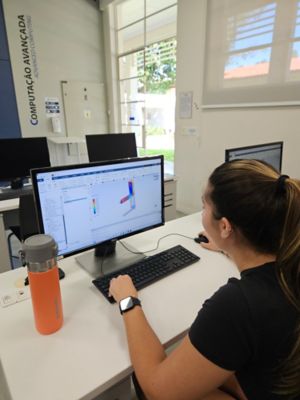CFD is used wherever there is a need to predict fluid flow and heat transfer, or to understand the effects of fluid flow on a product or system. CFD analyzes different properties of fluid flow, such as temperature, pressure, velocity, and density, and can be applied to a broad range of engineering problems across industries, including:
Aerospace and Defense: CFD makes it possible to model the airflow around aircraft to predict lift and drag, known as external aerodynamics. This is important as companies look to optimize aircraft designs for improved performance and decreased fuel usage. CFD can also simulate complex systems within the aircraft's interior, such as cabin air circulation, to predict air quality. Key applications include Avionics cooling, aero-optics, external aerodynamics, cabin HVAC, and propulsion.
Automotive: In electric vehicles, where e-motors and battery electrochemistry create complex intersections between mechanical, chemical, and electrical engineering, CFD allows us to conduct detailed thermal studies throughout the multiphysics system. This can help engineers predict how efficiently the motor is cooled and reduce battery thermal runaway that can cause fires. Key applications include gearbox lubrication, autonomous sensors, aeroacoustics, external aerodynamics, battery modeling, and electric motor cooling.







No comments:
Post a Comment